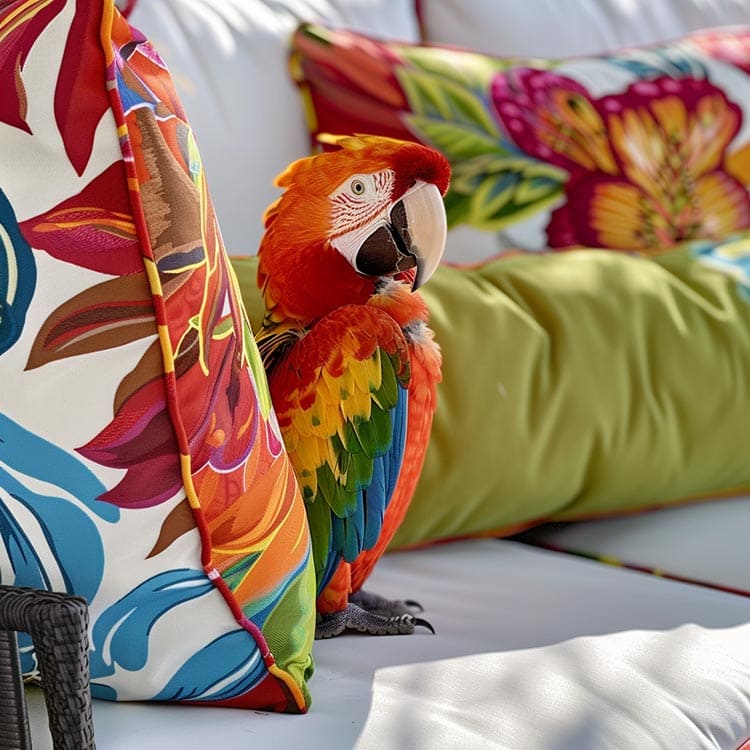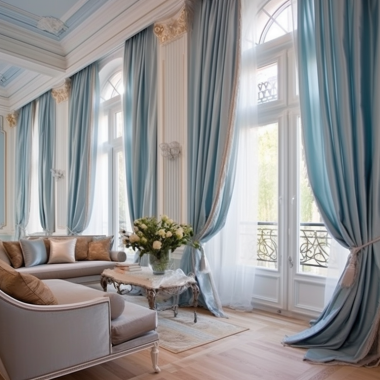Weight is an important component when it comes to choosing the right fabric for your project. Often times, we focus more on the texture, color, or pattern of a swatch, rather than focusing on how heavy it actually is. This isn’t as much of an issue when it comes to picking out clothing, but when it comes to home decorating, picking the wrong weight of fabric could be disastrous.
This is why I think it’s important to talk a bit about fabric weights and why paying attention to them is vital to a successful interior design project…
Simply put, fabrics are classified based off their GSM–grams per meter. The GSM is what differentiates between lightweight, medium-weight, or heavyweight fabric. Typically, the fabric weight is measured by placing a standard meter of fabric on a scale. The weight is recorded in grams and then the fabric will be classified based on that weight.
In regards to home interior fabrics, when we think of fabric weight, we’re really talking about durability. In short, the thicker or more condensed the material, the more durable it will be.
So let’s shift gears and talk durability…
We know that the classification of a fabric is based on the GSM, but within that classification is another component to focus on: double rubs.
You may be wondering what I mean by double rub. Let me explain.
The double rub is a back and forth motion that gives an approximation of the wear and tear. Manufacturers will perform a double rub test, which is often a simulation of a person getting in and out of a chair, to determine fabric strength. The number of double rubs it can withstand is recorded and then labeled.
In recent years, abrasion tests have become more extreme, leading to some discrepancies regarding these numbers. This has made things even more confusing for consumers in determining what is actually necessary for upholstery applications.
At the end of the day, it really comes down to how the fabric will be used. Anything that meets at least 15,000 double rubs is more than acceptable for upholstery. Furniture in more formal areas, that will get light-to-moderate use, can typically have as low as 9,000 double rubs without any issues.
Below, I’ve elaborated on fabric classifications and their double rubs–but for your quick reference, here’s a condensed version that can serve as a guide:
- Delicate use: < 9,000
- Light use: 9,000 – 11,000
- Medium use: 12,000 – 15,000
- Heavy use: 15,000+
Note: Most manufacturers cease abrasion testing once the fabric reaches (or surpasses) 35,000 double rubs.
Light Weight Fabric
Lightweight fabric can handle roughly 3,000 to 9,000 double rubs, meaning this isn’t the best fabric for heavy use. At best, this fabric will withstand up to three years of regular use, so it’s best to keep it for items such as accent pillows, curtains, or chair cushions that get minimal use. When looking at lightweight fabrics, lean toward tight weaves and durable fibers like cotton, linen, nylon, and microfibers.
Medium Weight Fabric
Fabrics of medium weight can handle approximately 9,000 to 15,000 double rubs. These are fabrics that would serve well in family and/or living rooms. Since they are more versatile that light weight fabrics, they can be used in many more ways.
Heavy Weight Fabric
These fabrics are the most durable, able to withstand more than 15,000 double rubs. In the past, heavy weight fabrics used to be stiffer and thicker. Today, however, newer blends are available, leaving you with much more supple and softer options. Choose heavy weight fabrics for heavy use pieces and elegant drapery. Be sure to factor in texture when looking at heavy weight fabrics (this can apply to medium weight as well). Certain overlaid patterns and textures can fray easily, so be careful as to where you use it. Just because it’s heavy weight, doesn’t mean all textures can withstand heavy wear.
Additional Tips
Some additional things to consider and remember when deciphering fabric weight:
- Look for wearability codes such as LD, MD, and HD on fabric swatches to determine if it’s light, medium or heavy. Some swatches may have DD, which stands for delicate duty.
- To prolong the lifespan of the fabric, keep it out of direct sunlight if possible.
- If you live in a humid climate, look for mildew-resistant fabric.
- Delicate fabrics should be avoided if you have indoor pets.
While it is always nice to know the brand name of a product, it’s important to remember that quality doesn’t have to be expensive. Be sure to shop around and speak with fabric suppliers directly when possible. Fabric can be changed, but to save in the long run, it’s important to keep in mind that it’s an investment that should be well understood.














